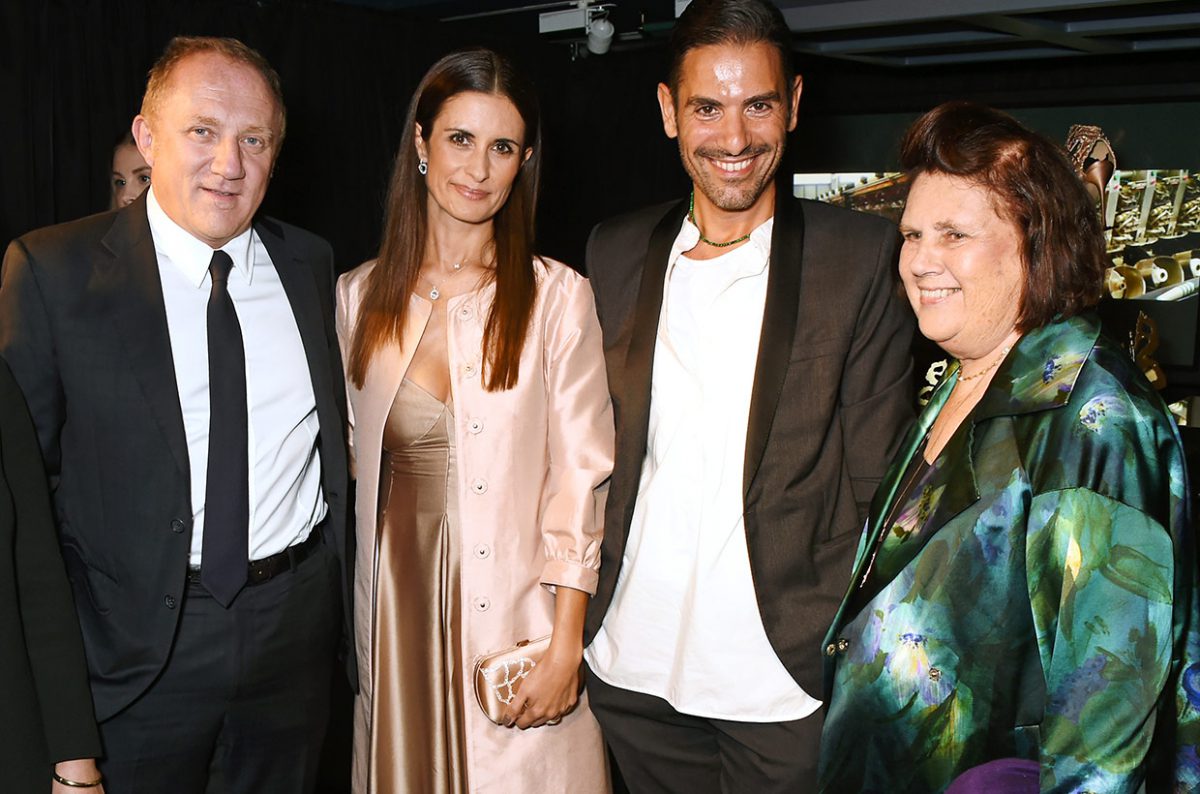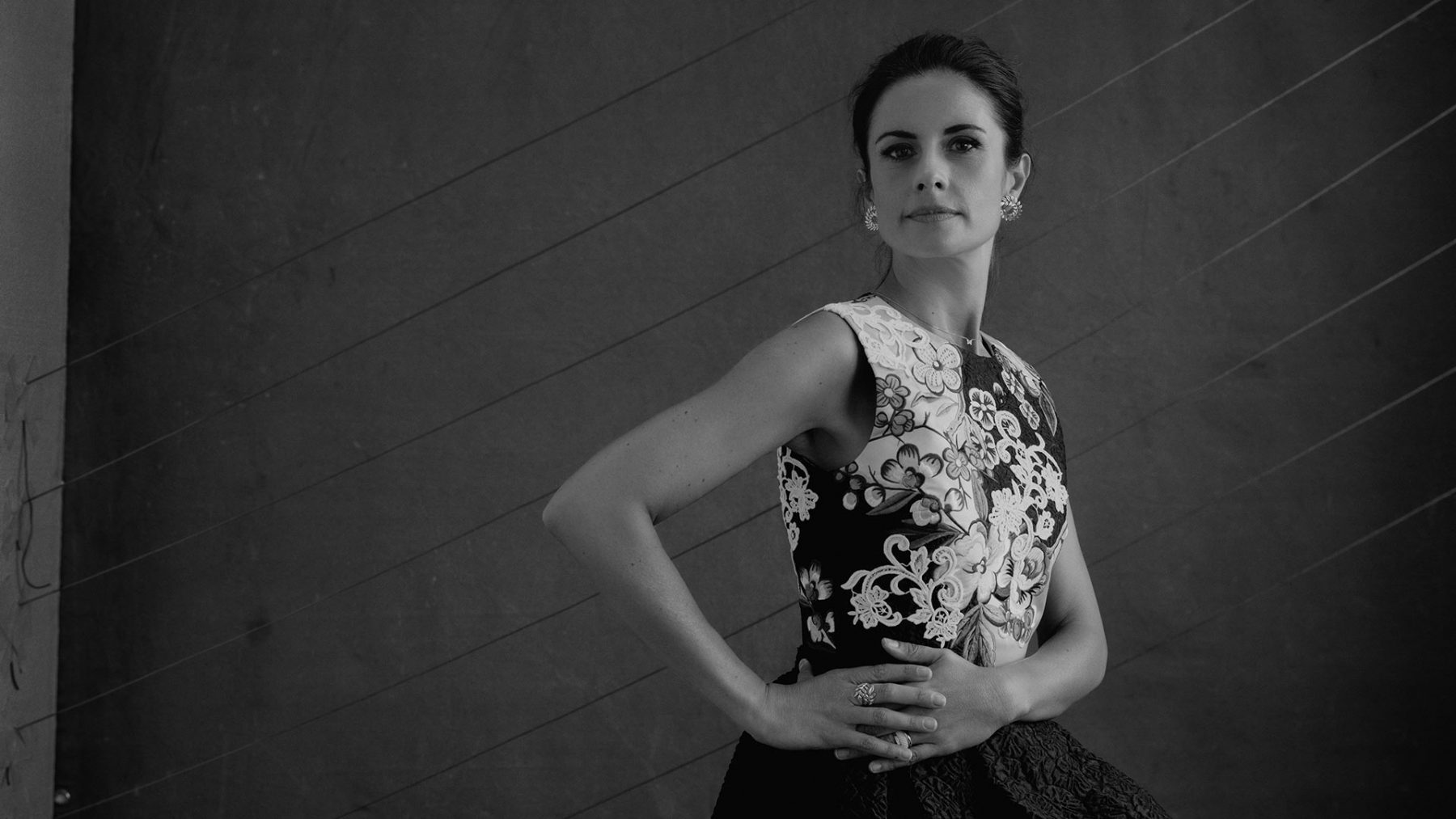Green & Fair: The On-Trend Non-Trend by Eva Müller-May | 3rd March, 2017 | Personalities
Runway glamour at the expense of the environment and exploited garment workers? A growing number of consumers and fashion designers think enough is enough and are calling for fashion that lasts: timeless clothing instead of cheap throwaways.
“I don’t think that things have to look ugly because they’re organic.” Stella McCartney has been designing fashion made to last since 2001.
Emblazoned across flowing tops, dresses, pants and skirts are the words: “Thanksgirls, no leather and no fur.” This is also written on the evening gowns in Stella McCartney’s spring/summer collection – a first. The models smile and dance their way through the fashion show finale like high-spirited children. According to American Vogue’s online headline, it was “the feel-good moment of Paris Fashion Week.” McCartney’s message: ethical fashion, often decried as boring and square, can in fact be glamorous and fun. “I grew up as a vegetarian on an organic farm in England. So somehow it was only natural not to use leather or fur for my products,” explains the daughter of ex-Beatle Paul McCartney, whose late mother Linda was a dedicated animal welfare supporter. The British designer has made a fine art out of the perfect cut and works with the kind of expensive, upmarket materials that are the norm in the world of luxury fashion. But as early as 2001, the year she presented her first prêt-a-porter collection in Paris, Stella McCartney demonstrated that for her, aesthetics and business are unthinkable unless there’s an ethical aspect as well. Over the years, she became a pioneer of sustainable fashion. In 2009 – because “we’re never perfect enough,” as she self-critically puts it – McCartney became the first designer in the luxury segment to join the international New York City-based advocacy group Natural Resources Defense Council. In line with its statutes, she has made her production chain transparent, reduced her company’s carbon footprint – and with it the production costs – by committing to use 25 percent less water and 35 percent less energy in the manufacturing process. She is also always on the lookout for new, biodegradable materials from which to produce her accessories. Livia Firth partnered with the Italian shoe designer Sergio Rossi to develop a shoe collection made of silk spun from recycled fishing nets for her sustainability initiative, which goes by the name of The Green Carpet Challenge. In collaboration with top designers, brands or firms, Firth and her team think up concepts for unusual sustainable projects designed to shine a global spotlight on the fusion of glamour and ethics. She advises global players like Gucci or Chopard on their journey to sustainability and provides them with a stage. Stella McCartney has designed evening wear out of recycled textiles for Firth’s initiative too, even creating an entire collection in 2014. The wife of Academy Award-winning actor Colin Firth is widely regarded as the green conscience of the luxury segment. She founded Eco-Age, a consultancy for “managing ethics and aesthetics,” ten years ago – long before the Rana Plaza catastrophe in Bangladesh in April 2013. When the dilapidated multistory factory building to the north of the capital Dhaka collapsed, it resulted in the deaths of 1,134 garment workers. More than 2,500 people were seriously injured. Many people see the disaster as the “zero hour,” the moment of awakening among consumers and producers alike. It was a brutal wake-up call to the disgraceful working conditions under which garments are produced for the mass market. People finally started asking questions: How is our clothing made? Are people exploited and nature destroyed in the process? A T-shirt for $5.99? About the same price as a Big Mac with bacon? How is that possible? “Fast fashion” became synonymous with cheap throwaway clothing. But it’s important to remember that luxury labels have their clothes produced in low-wage countries as well. Today, the legendary Coco Chanel’s much-cited remark that “Fashion is made to become unfashionable” no longer holds true. In her day, back when the fashion world was still in order from an ecological perspective, between two and four collections a year were handmade in Paris studios. But that rhythm has given way to a dizzying pace, even in the luxury segment: main, couture and mid-season collections, as well as special collaborations, fuel consumers’ appetites on a regular basis, sometimes even at monthly intervals. One blogger even aptly named this phenomenon “cannibalism in fashion.” However, the industry is gradually beginning to change the way it thinks. Giorgio Armani, Calvin Klein and Hugo Boss have joined the Fur Free Alliance, a coalition of animal protection organizations, and Swiss watch and jewelry maker Chopard uses fairly mined gold. “It’s ten percent more expensive than gold from conventional mines,” said the luxury brand’s art director and co-president Caroline Scheufele at the Cannes Film Festival two years ago. “But we absorb the difference so that it doesn’t cost the buyer more.” Since 2014, the company has been making the festival’s famous Golden Palm trophy out of “fairmined” gold as well. Scheufele says it makes her proud that the symbol for the best film “is now made of gold from traceable sources, mined under conditions that respect both humans and the environment.”
“Fashion is made to become unfashionable.” Coco Chanel
I’s the end of fashion as we know it,” claimed Li Edelkoort, the superstar of the international trend research industry, in her provocative and much-discussed “Anti-Fashion Manifesto,” which was published just a few months before the Rana Plaza disaster. Even then, she was already trying to raise awareness: “How can a product that needs to be sown, grown, harvested, combed, spun, knitted, cut and stitched, finished, printed, labeled, packaged and transported cost a couple of euros?” According to Edelkoort, there should be a minimum price for a piece of clothing, just like there is for potatoes. And that means fair wages and fair working conditions for the people who make it. In 2014, a note was found sewn into cheap clothing for Irish fashion discounter Primark, evidently put there by a garment worker in China. “The work we do is similar to the hard work that oxen and horses do,” it read. “It’s high time we started protecting the basic human rights of the people who make our clothes,” demands Livia Firth. Her appeal to consumers: “Every time you shop, always think: ‘Will I wear this a minimum of 30 times?’” It takes a lot of natural resources to make clothing – around 200 tons of water to make one ton of jeans, for instance. Often, it all ends up as persistent waste because it is contaminated with dangerous chemicals. In the last two decades, global textile consumption has increased by 400 percent while the fiber market has doubled to 75 million tons a year. Most of the clothing ends up in the trash within a very short space of time. According to L.A.-based director Andrew Morgan, not enough people know that. Which is why he travelled to the farthest corners of the world to make the much-acclaimed documentary The True Cost. Co-produced by Livia Firth, the film describes what Morgan calls “the biggest lie of the modern world.” With brutal honesty, he shows the harm caused by the cheap clothing industry: “The story it has told us about clothing makes the product seem very innocent. And yet the textile industry is the world’s second-biggest polluter, second only to the oil industry,” says Morgan. “We’re living on credit in every respect.” Since Rana Plaza, mass-market producers like H&M, Uniqlo and Zara have started selling sustainable mid-season collections or recycling jeans. “It’s a step in the right direction, but still only a fraction of the entire range,” says Kirsten Brodde of Greenpeace. “We’ve managed to get 78 fashion labels all over the world to commit to phasing out all dangerous chemicals. But even so, the pace of fashion threatens to swallow up the ecological progress that represents.”
“It’s the end of fashion as we know it. It’s time to simply celebrate clothes!” Trend researcher Lidewij Edelkoort
The number of small organic fashion labels like Grüne Erde, People Tree or Greenality is growing steadily. Besides using organic raw materials from fair trade sources, they carry labels and certificates that guarantee minimum social standards along the entire production chain or manufacture their goods more ethically in selected countries. But in an interview with Vogue, Livia Firth doesn’t actually advocate certifying “green clothing” with organic labels. In fact, she proposes the opposite, suggesting that we start labeling everything else “unethical” instead. It once took her a whole year to save up for a new coat, says Firth, who still enjoys wearing vintage clothes from her mother. It will probably take a while until the fashion industry really changes course, but at least a start has been made. One thing’s for sure: there’s no shortage of ideas. The contest to come up with alternatives to conventional textile production is in full swing, with proposals for making fashion out of waste materials, banana or milk fibers, bamboo or stinging nettles. Concept artist Jessica Dettinger suggests XXL-sized unisex clothing. Berlin fashion designer Mareike Ulman makes multifunctional mixand-match garments. And Li Edelkoort can envisage bespoke tailoring making a comeback. Those who can’t afford it, she says, can always learn to make their own clothes. Stella McCartney’s fashions might not be within everyone’s budget either, but just imagine her best girlfriend Gwyneth Paltrow on the red carpet at the Academy Awards, wearing an evening dress emblazoned with McCartney’s credo: millions would read it. What would people focus on? The actress, the perfect cut of her gown or the message printed across it? The publicity could speed up consumers’ identification with sustainable fashion and heighten their awareness of the bigger picture. Because at the end of the day, everything is connected. What you wear shows how you think and act. Fashion is dead. Long live fashion!





